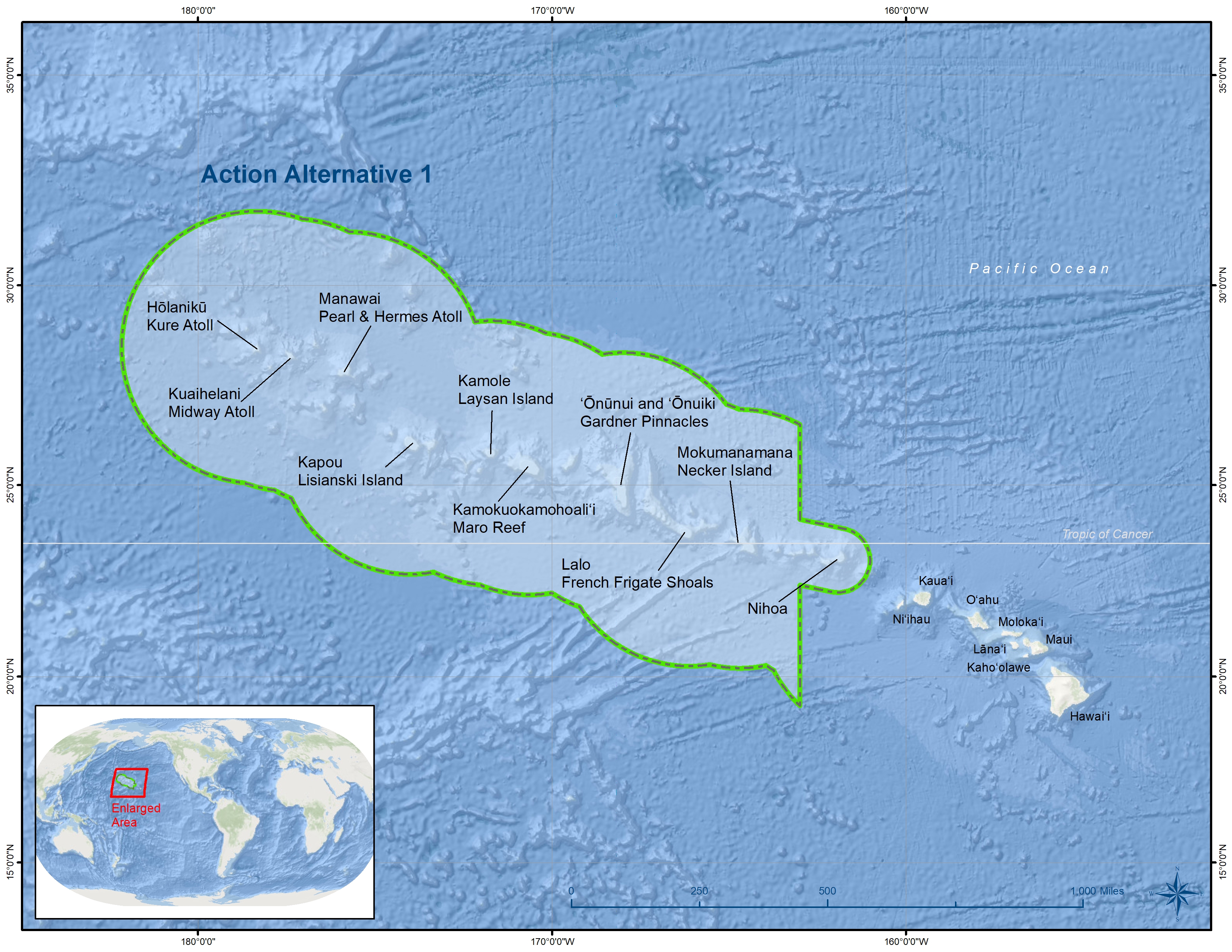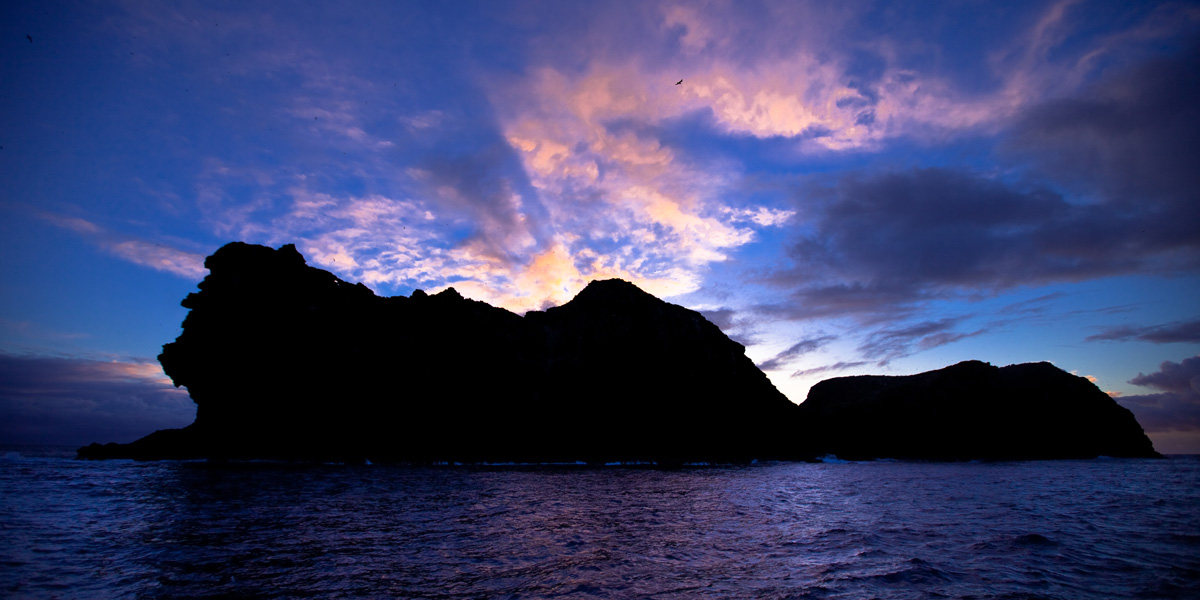Proposed Papahānaumokuākea National Marine Sanctuary

NOAA has released for public comment the draft designation documents for the proposed Papahānaumokuākea National Marine Sanctuary. This action comes after the agency conducted a thorough analysis and evaluated feedback from the public, stakeholders, Native Hawaiian communities, scientists, and federal and state agencies. The proposed sanctuary would include the marine portions of the existing Papahānaumokuākea Marine National Monument.
The proposed Papahānaumokuākea National Marine Sanctuary would not change the area’s status as a marine national monument. The co-management structure that is a hallmark of the monument will continue.

NOAA is proposing a sanctuary area approximately 582,250 square miles. The agency’s preferred boundary overlaps with marine portions of the monument. The boundary includes marine environment surrounding the Northwestern Hawaiian Islands from the shoreline of the islands and atolls seaward to 200 nautical miles, including all state waters and waters of the Northwestern Hawaiian Islands Coral Reef Ecosystem Reserve, Midway Atoll and Hawaiian Islands National Wildlife Refuges, and State of Hawaiʻi Northwestern Hawaiian Islands Marine Refuge. Large-scale conservation areas such as this are important to protect highly mobile species, such as sharks and marine mammals. They also protect entire ecosystems, preserving critical ecological functions and conserving biodiversity. For details on the proposal, visit Proposed Papahānaumokuākea National Marine Sanctuary on NOAA’s Office of National Marine Sanctuaries website.
Hanohano Nā ʻĀina Kūpuna: Honoring Papahānaumokuākea as Kūpuna (Ancestral) Islands
Hanohano Nā ʻĀina Kūpuna is a tribute to Papahānaumokuākea as a sacred ancestral place to kanaka ʻōiwi (Native Hawaiians) who honor this extensive seascape as an area where all life emerged and evolved from, and to which spirits return to after death. Native Hawaiian kūpuna (esteemed elders) have strongly advocated for the long-term lasting protection of Papahānaumokuākea from the beginning and instilled the vision and values that set the course for a collective journey caring for this sacred place. Weaving together the past, present, and future, their legacy is foundational to guiding Native Hawaiian engagement in the active protection and management of Papahānaumokuākea. In proposing a national marine sanctuary, our goal is to continue to honor their legacy and vision towards ensuring the permanency of lasting protection of this place for future generations. Sanctuary designation will provide another layer of protection to continue honoring this place and will not diminish any existing protections.

History
There is a long history of considering this area for national marine sanctuary designation, beginning with an Executive Order in 2000 by President William J. Clinton. The National Marine Sanctuary Program began the process of designating the Northwestern Hawaiian Islands Coral Reef Ecosystem Reserve as a national marine sanctuary under the National Marine Sanctuaries Act in 2002, including the initiation of a public scoping process. President George W. Bush designated Papahānaumokuākea Marine National Monument under the Antiquities Act in 2006, based in part on the sanctuary designation process that was already underway. President Barack H. Obama's proclamation in 2016 created the Monument Expansion Area and also called for initiating the process to designate a national marine sanctuary. In 2020, the Senate Committee on Appropriations directed NOAA to initiate the sanctuary designation process.
These presidential proclamations and the existing regulations for Papahānaumokuākea Marine National Monument served as benchmarks for drafting the proposed rule for the proposed national marine sanctuary.
Public Comment
NOAA and the State of Hawaiʻi will accept public comment on the proposal from March 1 through May 7, 2024. These comments will also apply to the State of Hawaiʻi public comment process under Hawaiʻi Revised Statutes Chapter 343, the Hawaiʻi Environmental Policy Act. This is a joint process.
NOAA and the State of Hawaiʻi will co-host meetings to gather public input. We welcome comments in English and ʻōlelo Hawaiʻi (Hawaiian language) at all public meetings. See information on public comment.
Hāmama ʻia nā hālāwai lehulehu a pau i ka hāpai ʻana i ka manaʻo ma ka ʻōlelo Hawaiʻi a hoʻopaʻa kūhelu ʻia.
We welcome comments in ʻōlelo Hawaiʻi (Hawaiian language) at all public meetings.



